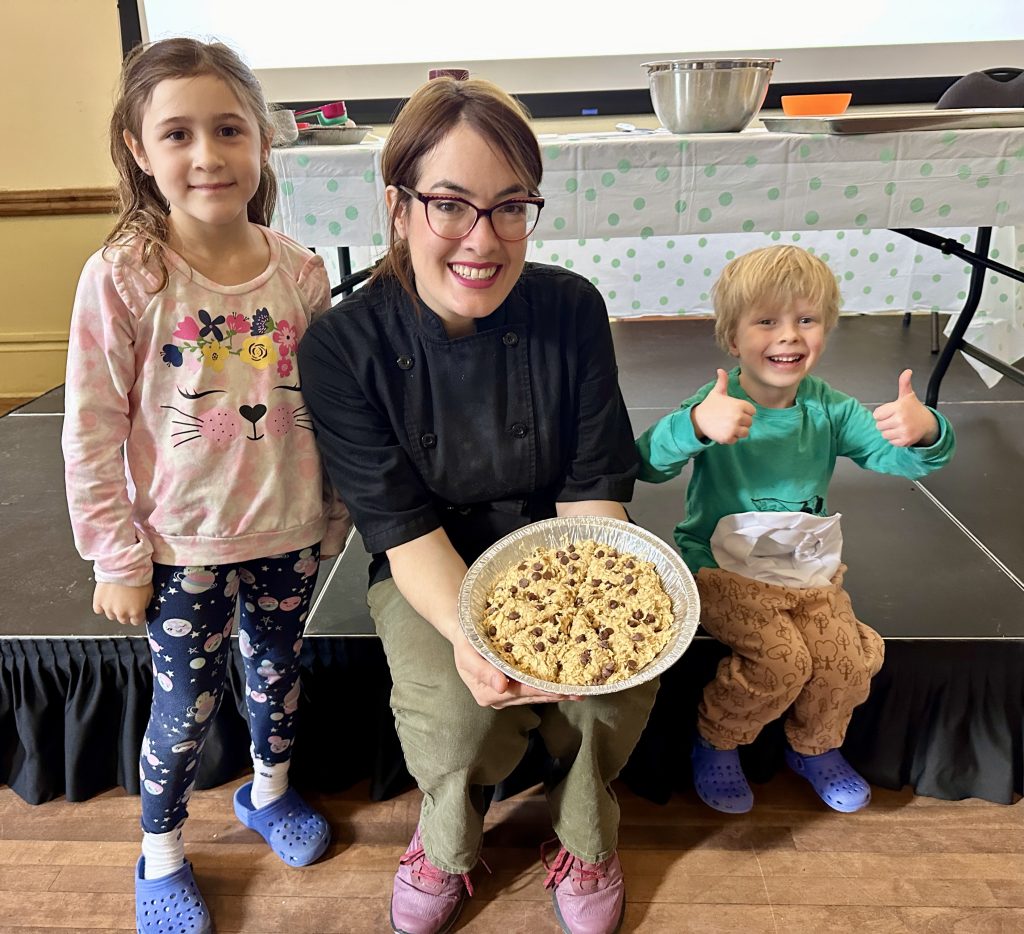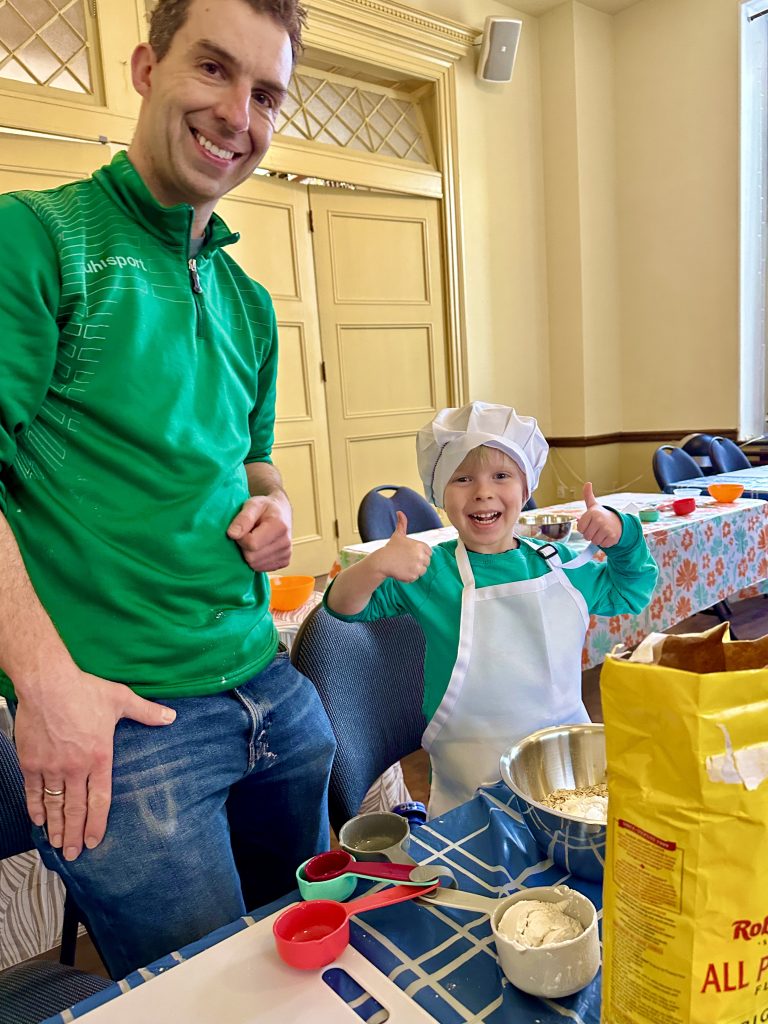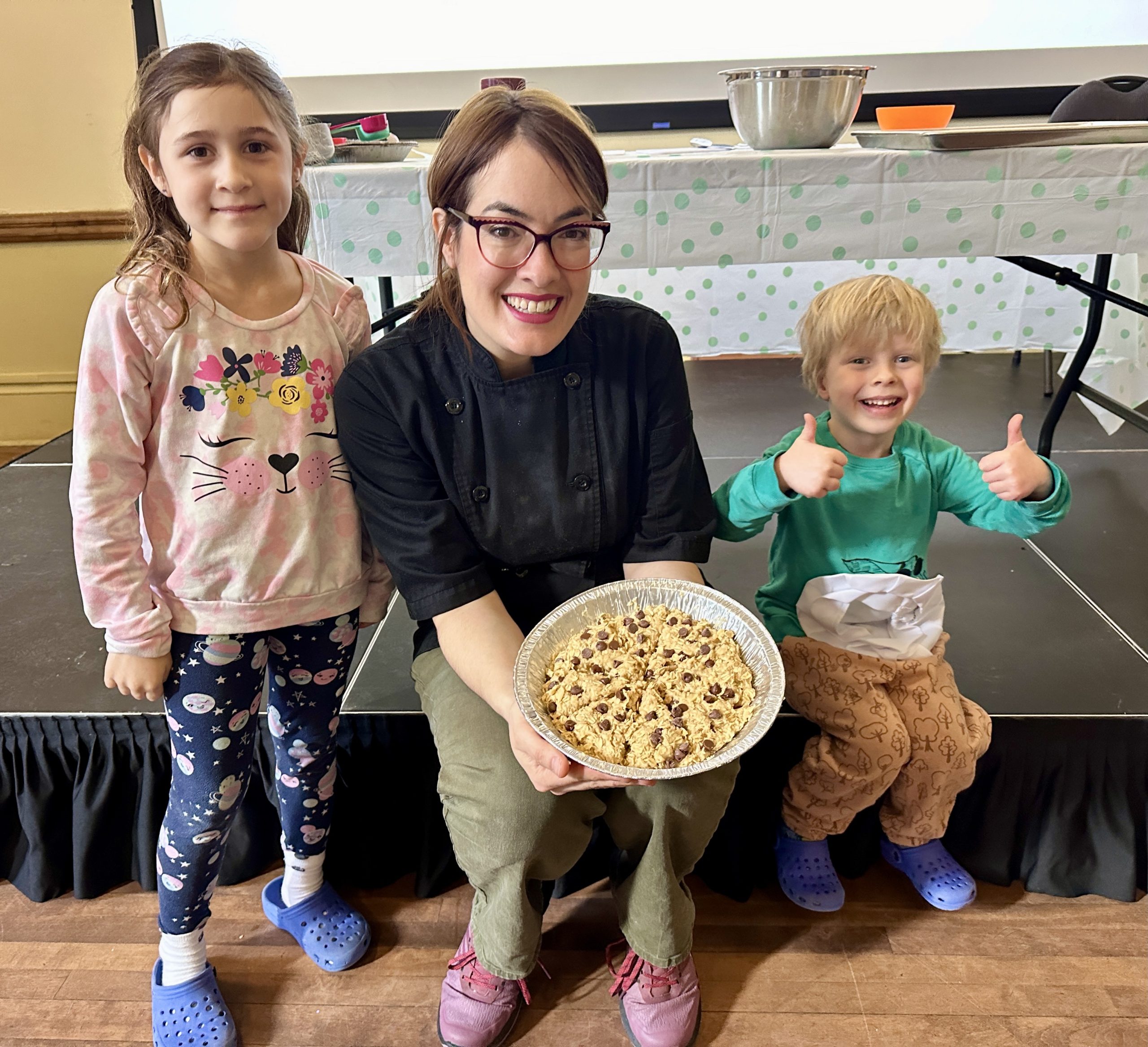Kids tie on aprons to discover scones and Scottish history at Morrin Centre
Danielle Burns
danielle@qctonline.com
Culinary workshops “were a project we’ve wanted to do for a long time, and we sort of put it on the back burner when COVID came along,” Morrin Centre executive director Barry McCullough told the QCT. He added, “The goal of the project is to bring together English speakers and French speakers in an environment where they can learn about each other’s cultures through food … a great way to start a conversation!”
After a further delay due to a snowstorm, the English-language workshops for kids ages five to eight, funded by Canadian Heritage, were held at the Morrin Centre on Jan. 21.
Presenter Héloïse Leclerc of La Touche Héloïse looked no further than her grandma’s recipe book to teach dishes like chicken fricassée (a potato and chicken stew) and cream salad to a full room on Jan 18. “With so many processed foods available and so little time on our hands to teach cooking,” Leclerc said she was “touched” by teaching children. She added, “Knowing basic ingredients and being able to put them together in a dish is the foundation of self-care; cooking fosters autonomy, the ability to plan ahead and adjust, curiosity, creativity and a sense of connection with the people who cook with us or eat our food. It is truly magic.” However, Leclerc, a francophone Quebecer, acknowledged she had “no idea which recipes to select” for the English-Canadian portion of the workshop.
As part of the process, she met Donald Fyson, a Université Laval history professor and author who sits on the Morrin Centre executive committee as honorary librarian. Leclerc said Fyson explained that there was “no real divide” between French and English Canadian foods, saying household income was traditionally the main factor when selecting ingredients. Fyson also evoked the diverse origins of Canadians and underscored this with a story from his own family’s folklore that Leclerc told the scone makers on Jan 21.
When Fyson’s Ukrainian mother first started dating Fyson’s father, who was of Scottish heritage, she wanted to impress him with her cooking. Knowing he was fond of scones, she got baking. She was really proud of herself when she presented the round scones to her dearest. However, his reaction was less than pleased. “What are these? These are not scones!” he said. His grandmother’s scones were triangular and these round ones (in the English shape) didn’t count!
Contemporary scones now come in many shapes, sizes and flavours, from savoury to sweet. Other than the shape difference, Scottish scones also use oats. Since scones “tend to be on the dry side,” they are often eaten with clotted cream or fruit jam and butter, Leclerc explained. There is a misconception that scones come from England, but the first known literary mention of scones was actually in a Scottish poem written in 1513, Leclerc told attendees.
Aspiring chef Adrian Wolff may only be five years old, but he wore his chef’s hat and apron with gusto. His favourite part of the workshop was cutting the scones into a pizza shape (with his dad’s help) and picking the toppings – blueberry and chocolate chips. Leclerc said the biggest challenge is “working with the lack of equipment” and finding ways to adapt without access to a full kitchen. For example, traditional scones use cold fat layered into the dough and “I couldn’t imagine the kids working with that.” The chef chose a forgiving recipe that allowed for butter (melted in a microwave) to be added to the wet ingredients.
Six-year-old Cassie Burns- Dubé said, “Everyone feels hap- pier after they eat a chocolate scone!”
Due to the postponement, only two children and their parents attended. More participants were registered for the pets de soeur (the name translates to “nun’s farts”) workshop for kids ages eight-13 in the afternoon. The traditional Quebec dessert was invented from pastry scraps rolled up with brown sugar and butter.
See Morrin.org for upcoming English-language and bilingual culinary events for adults – such as “Chop suey through the ages” on Feb. 1 – and check out latoucheheloise.com to learn more about Héloïse Leclerc and her work.



 Aspiring chefs Cassie Burns-Dubé and Adrian Wolff flank their culinary guide Héloïse Leclerc, who shows off their scones (double chocolate/almond in this case) before they are taken home and popped into an oven. (Photo by Danielle Burns)
Aspiring chefs Cassie Burns-Dubé and Adrian Wolff flank their culinary guide Héloïse Leclerc, who shows off their scones (double chocolate/almond in this case) before they are taken home and popped into an oven. (Photo by Danielle Burns)